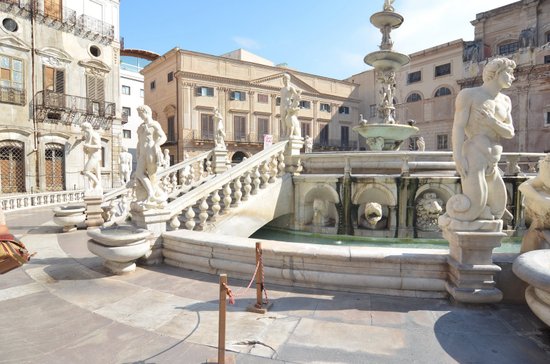Palermo highlights and Monreale
4 hours or 7 hours
English-speaking guide suggested
PALERMO HIGHLIGHTS
Palermo is a city of a thousand faces in which various architectural styles coexist perfectly. Arab-Norman architecture, a particular style of construction and decoration, emerged in Sicily during the 12th century. In 1072, Robert Guiscard and his brother Roger, members of the Altavilla family, conquered a large part of Sicily and Palermo. In the previous two centuries, the island had been ruled by three different dynasties from North Africa. The advanced Islamic culture had favoured an exceptional development of the territory, making Palermo a splendid city comparable to Cordoba, Jerusalem, Baghdad or Damascus. The new Norman rulers were won over by Islamic architectural styles and decided to exploit the skills present in the area to construct their buildings. Thus, Arab craftsmen, skilled in the art of wood-carving, and Byzantine mosaicists were exploited to create the interior decorations of the churches.
Between the end of the 19th and the beginning of the 20th century, Palermo moved towards a new style: Art Nouveau, also called Art Nouveau, for the construction of Theatres, Villas and Bourgeois Palaces. Nature with its many nuances inspired this artistic expression and fuelled free creativity. Undulating facades with motifs reminiscent of creepers and stained glass windows created shiny, tinted surfaces emerged in the architecture.
Palermo saw the blossoming of the most elegant and refined Art Nouveau style with Ernesto Basile.

Monreale Cathedral
A destination for thousands of visitors, the cathedral of Monreale is a harmonious fusion of Norman, Arab and Byzantine architectural styles.
The façade is flanked by two mighty towers and the main portal is decorated with interlaced arches reminiscent of Arab influence.
Once inside the cathedral, one is astonished at the incredible series of mosaics covering some 6,340 square metres of the walls.
The mosaics, made of gold tiles, illustrate stories from the Bible from the Creation to the life of Christ.
The apse of the cathedral is dominated by the image of Christ Pantocrator, a majestic figure blessing with his right hand and holding the gospel with his left hand.


